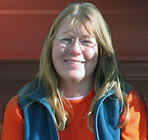 It’s two days after Public Day and I’m still tired. Like many of us, I was assigned to man a single station. By myself. As ASC Lab Manager the artifact table was a natural selection. I felt quite smug that morning when I set up an “Easy-Up” to provide shelter from the rain for the artifacts and, just as importantly, myself. I soon recognized the folly of my ways. Only a few passing showers appeared and I was left shivering in the shade as the wind picked up throughout the day. By the final hour I was literally holding onto the shelter to keep it from blowing away into the Porto-lets located just behind me.
It’s two days after Public Day and I’m still tired. Like many of us, I was assigned to man a single station. By myself. As ASC Lab Manager the artifact table was a natural selection. I felt quite smug that morning when I set up an “Easy-Up” to provide shelter from the rain for the artifacts and, just as importantly, myself. I soon recognized the folly of my ways. Only a few passing showers appeared and I was left shivering in the shade as the wind picked up throughout the day. By the final hour I was literally holding onto the shelter to keep it from blowing away into the Porto-lets located just behind me.  Those scattered showers and high winds did nothing to curb the public in their interest in archaeology. More than 500 people came to visit the site… and the artifact table which was covered with the fruits of our labors to date. Probably the most asked about group of artifacts were the Chinese medicine vials, often mistakenly assumed to be opium bottles. These small, thick-walled, tapered vials are often found on archaeological sites and typically contained a single dose of a liquid medicine or a small quantity of pills. Opium, a thick sticky substance, would have been impossible to remove from these vials.
Those scattered showers and high winds did nothing to curb the public in their interest in archaeology. More than 500 people came to visit the site… and the artifact table which was covered with the fruits of our labors to date. Probably the most asked about group of artifacts were the Chinese medicine vials, often mistakenly assumed to be opium bottles. These small, thick-walled, tapered vials are often found on archaeological sites and typically contained a single dose of a liquid medicine or a small quantity of pills. Opium, a thick sticky substance, would have been impossible to remove from these vials. Among the finds from the project was a grinding stone with a wonderfully smooth surface over which the kids liked to run their fingers. Several visitors spent some time explaining to me exactly how the stone was used; one gentleman went into great detail as he had toiled many an hour as a youngster using the same type of grinding stone in his mother’s kitchen. His family would soak soybeans overnight and then feed them into the hole on the top of the stone. As he used a sturdy stick to turn the stone and grind the beans, soy milk would be caught in a lower, wider grooved stone while soy paste would be held in the stone. He informed me that product was “very nutritious”.
Among the finds from the project was a grinding stone with a wonderfully smooth surface over which the kids liked to run their fingers. Several visitors spent some time explaining to me exactly how the stone was used; one gentleman went into great detail as he had toiled many an hour as a youngster using the same type of grinding stone in his mother’s kitchen. His family would soak soybeans overnight and then feed them into the hole on the top of the stone. As he used a sturdy stick to turn the stone and grind the beans, soy milk would be caught in a lower, wider grooved stone while soy paste would be held in the stone. He informed me that product was “very nutritious”.All who came to visit the artifact table found something of interest. Children were as curious about the food bones I had set out for display (an assortment of pig’s feet, chicken, and cow) as they were the bone toothbrush and porcelain doorknob. I could feel the sincere pleasure of several elderly Chinese women when they viewed the items on the table, things that may have been used by their parents and grandparents. Local historians were intrigued with a silver knife handle from the Hotel Vendome, a first-class hotel in San Jose which was built in 1888 and later demolished in 1930. Truly, there was a little something for everyone!

